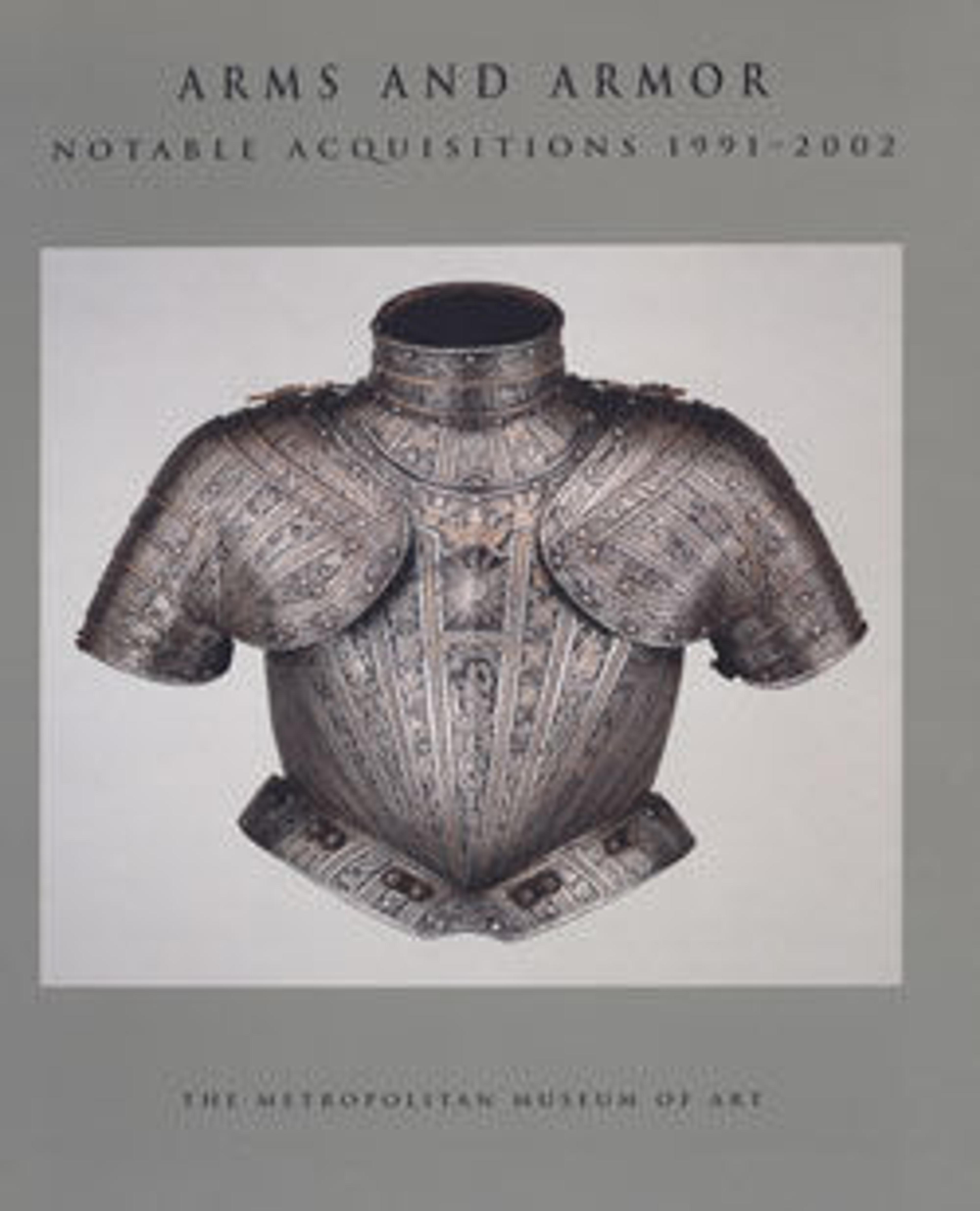Six Armor Scales
These six scales come from a group of approximately three to four hundred recovered from a region of New Mexico that the Spanish explored and later colonized during the sixteenth and seventeenth centuries. Originally the scales would have been riveted in an overlapping pattern, like shingles, to the outside of a leather or textile jacket (traces of fiber, apparently wool, remain under some of the rivet heads). They are important because there is otherwise very little evidence for the use of scale armor in the New World. Scale armor was largely obsolete in Europe by the time of the colonization of the American Southwest.
Scale armor is an extremely ancient form of defense, with surviving fragments from the Middle East dating as early as about 1700 B.C. In Europe variations of scale armor were used from the Roman period through the end of the Middle Ages. Full-torso armor of scale went out of fashion after the mid-fourteenth century A.D., but some scale armor continued to be made and worn in certain circumstances as late as the seventeenth century. The coat of scales from which this example may have come was probably outdated by several generations when it was brought to New Mexico, possibly on a Spanish expedition of the late sixteenth or early seventeenth century, or perhaps as trade goods as late as the eighteenth century.
Scale armor is an extremely ancient form of defense, with surviving fragments from the Middle East dating as early as about 1700 B.C. In Europe variations of scale armor were used from the Roman period through the end of the Middle Ages. Full-torso armor of scale went out of fashion after the mid-fourteenth century A.D., but some scale armor continued to be made and worn in certain circumstances as late as the seventeenth century. The coat of scales from which this example may have come was probably outdated by several generations when it was brought to New Mexico, possibly on a Spanish expedition of the late sixteenth or early seventeenth century, or perhaps as trade goods as late as the eighteenth century.
Artwork Details
- Title:Six Armor Scales
- Date:possibly 16th to 18th century
- Geography:New Mexico
- Culture:probably Spanish
- Medium:Iron, textile fibers (wool)
- Dimensions:each scale: 1 x 1 5/8 in. (2.5 x 4 cm)
- Classification:Miscellaneous
- Credit Line:Gift of Mr. and Mrs. Raymond E. Willerford, 1998
- Object Number:1998.366.1–.6
- Curatorial Department: Arms and Armor
More Artwork
Research Resources
The Met provides unparalleled resources for research and welcomes an international community of students and scholars. The Met's Open Access API is where creators and researchers can connect to the The Met collection. Open Access data and public domain images are available for unrestricted commercial and noncommercial use without permission or fee.
To request images under copyright and other restrictions, please use this Image Request form.
Feedback
We continue to research and examine historical and cultural context for objects in The Met collection. If you have comments or questions about this object record, please contact us using the form below. The Museum looks forward to receiving your comments.
